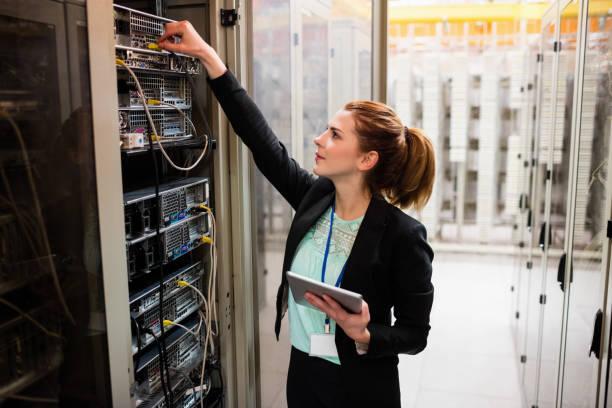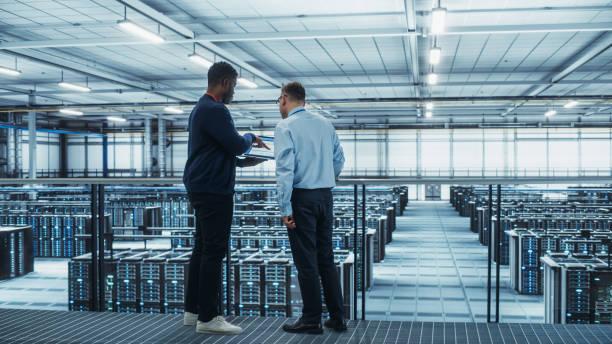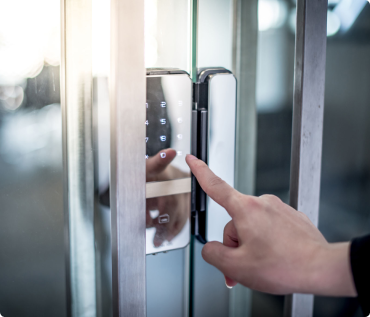Environmental monitoring products can be vigorously monitored anywhere, be it a data centre, server room or in your rack. If you have already installed a server room temperature monitoring system, then you surely have done an excellent job. You must have acknowledged the usefulness of these monitoring systems yourself. But if you haven't introduced your server room to the server room temperature monitoring system, then this blog is for you!
You must be aware of the heat that is generated by the servers and other networking equipment, mainly when a room is filled with dozens of other additional devices and what it can do to your devices that are an essential part of the business. Businesses can face a massive loss of revenue because the lifespan of the devices gets reduced & the unavoidable downtime, which means productivity becomes less. A lot of replacements or repairs of the equipment could take place due to the heat produced in the server rooms. All these factors indicate the need to have server room temperature monitoring systems.

Server room temperature monitoring systems are
network-enabled systems that examine whether the server rooms are functioning
at an optimal level and are paired with the cooling devices to prevent the
preponderance of high temperatures. They can be placed anywhere in the server
rooms. This way, the cooling costs of the businesses can be reduced.
To know the benefits of a server room temperature monitoring system in detail, here are some of the benefits that you might not know very well.
5 Benefits Of Server Room Temperature Monitoring System :
1) Inflates the life-span of the
equipment - Excessive heat can cause harm to the
devices and can also cause the failure of the hardware later on the run. This
can lead to tremendous problems such as labour costs included in replacements
and delays in providing services to the customers or your employees who
entirely rely on these servers for being productive. However, a server room
temperature monitoring system ensures that the temperature of the room is
maintained appropriately, which leads to an increase in the lifespan of the
equipment. It does prevent the devices from getting wrecked.
2) Planning and scaling server
room temperature monitoring - Server room temperature
monitoring systems help in the process of planning and scaling server rooms.
There's a correlation between energy costs & size obviously, more AC units,
exhaust fans, and cold aisles are required for a big room if compared to small
ones to maintain the temperature of the room. By studying the data collected
from the temperature monitoring systems, a person would be able to understand
the cooling loads and airflow distribution of your current layout. This could
also be done side by side by taking into account the consumption of electricity
of all the AC units in order to cool the server rooms. These insights help in
planning the further heat loads that can be generated from brand new equipment.
At last, ineffective monitoring systems, the layout stays intact even after
some other changes are integrated.
3) Prevents downtime by sending alerts when servers are at risk - Good temperature monitoring systems allow you to configure alerts for at-risk circumstances and notify the key personnel via text message or email when the temperature of the room has reached a high level which can be dangerous. This ultimately ensures the safety of the environment as when something happens, such as the temperature of the room has increased due to heavy computing loads or AC units stop functioning; then someone can take specific actions needed to avoid the risk of any kind of damage as and when notified.

1) Efficient airflow &
Prevents recirculation of heat - To measure the
temperature of the inflow & outflow of air from the servers, temperature
sensors can be placed on the front and back of the servers. This is important,
which helps in knowing that the cold airflow is not getting mixed with the hot
air that is circulating in the room. It also ensures that the hot air exhaust
from the servers is within the spectrum. Airflow sensors will alert you if the
airflow in the server rooms stops.
2) Adjusting AC Temperature to
minimize power consumption - Once you start monitoring
the condition of your server room, you will be noticing baselines and trends,
and by having a look at this collected data, you will see that your AC unit is
keeping up with the load and if there are any cost savings that can be implied.
Room temperatures are set lower many times than what is precisely needed to
restore in the cases where you don't know how constructively the servers are
getting cooled.
The rack-mounted
temperature sensors will also provide insights into the effectiveness of AC
units that cools down the servers by allowing the measurement of the
temperature of cool air intake and outflow of hot air separately. This assures
that adequate temperatures are taken in, and the temperature which is coming
out is within the thresholds.
If the intake and exhaust air of your room server is less than 80°F and if the server room's ambient temperature is roughly around 64°F, then it is recommended to optimize the temperature as you must be cooling too much.
You can start testing and optimizing the temperature of the server room by making an increase in the temperature to find that perfect spot for reasonable energy efficiency.

Why Is
It Necessary To Keep The Server Room Cool?
Servers get heated while they are functioning; that is a known fact indeed, but if a server becomes really hot, then it can cause physical destruction. If the server room has various servers in it, then the combined heat of all the servers will give rise to the temperature of the room. This means that the collective heat of the room will make the onboard heating issue worse as the cooling systems of the servers will be sucking warm air; that's why cooling the server room becomes an essential task that cannot be ignored.
What
Should Be The Humidity Level Of A Server Room?
"Relative humidity" (RH) means the measurement of the humidity in a server room. The relative humidity is expressed as a percentage, and it should be somewhere between 40 to 60 percent. Static will be produced if the RH level is too low, and if the RH level is way too high, then moisture will convert into water within the servers and the other appliances present in the room, which could lead to short-circuit.
Servers
Fail At What Temperature?
The significant components of servers are the
CPUs as they have thermometers installed within them, which will shut down, or
the speed will be reduced if the temperature of the server room gets too high.
This level is known as TJMax, or it is also called TJunction. Every type of
processor has a distinct TJMax level. AMD processors have 90 to 95 degrees
Celsius, whereas, for Intel processors, it is approximately 100 degrees
Celsius.
Well, making sure that the servers are
performing sufficiently is one-dimensional. Surveying some of the environmental
factors such as temperature, humidity, airflow, power are necessary for keeping
servers available.




